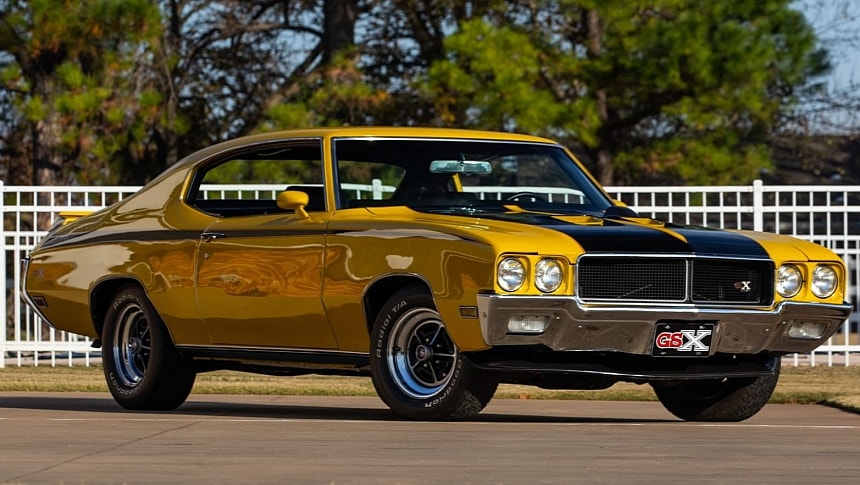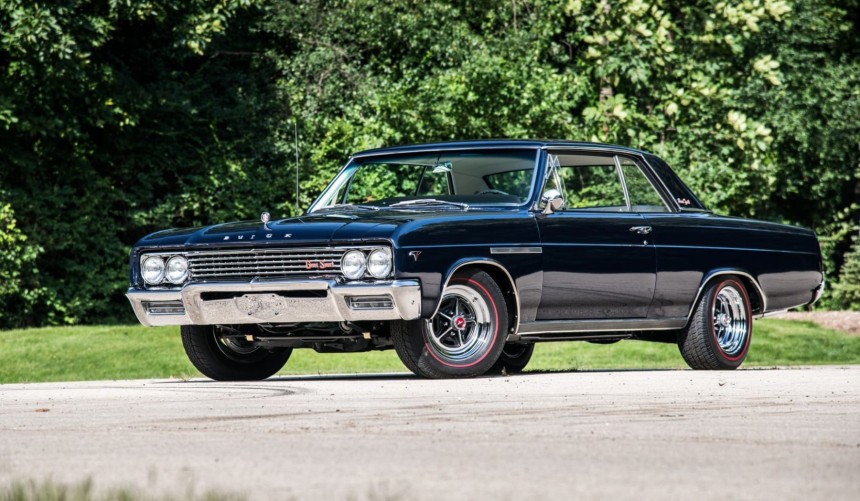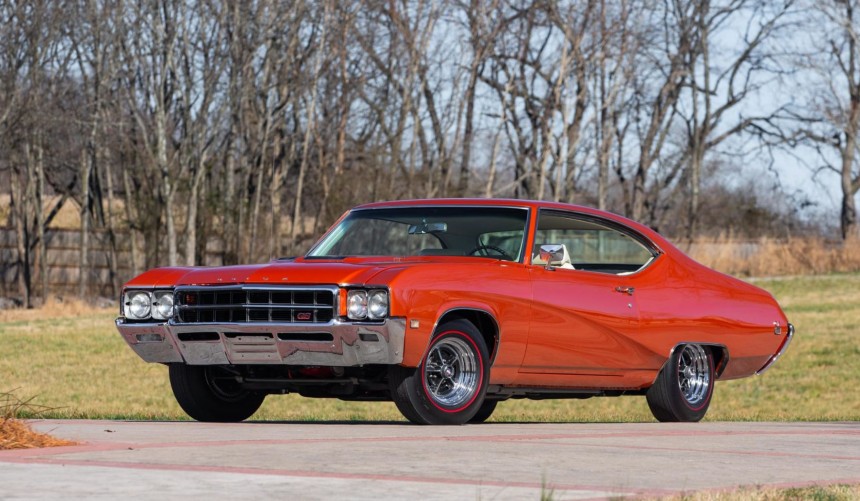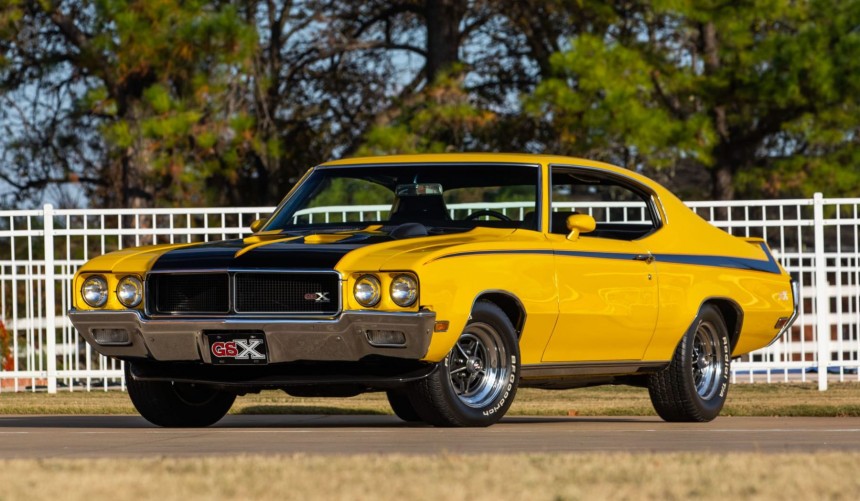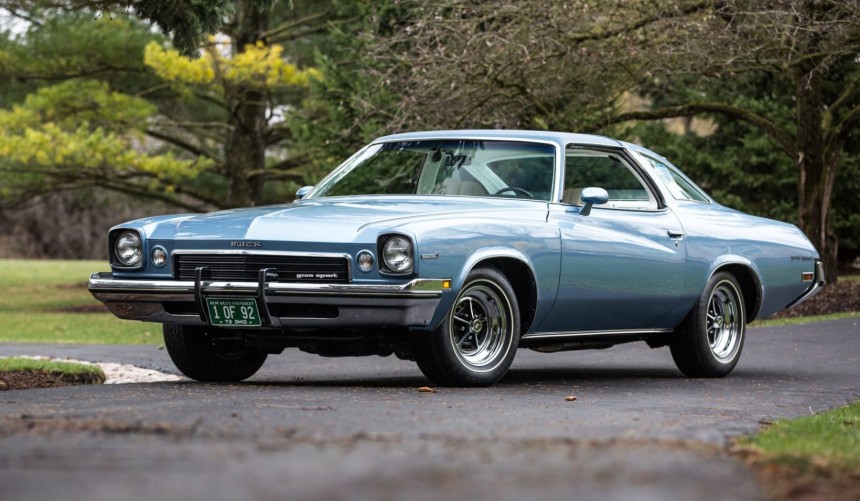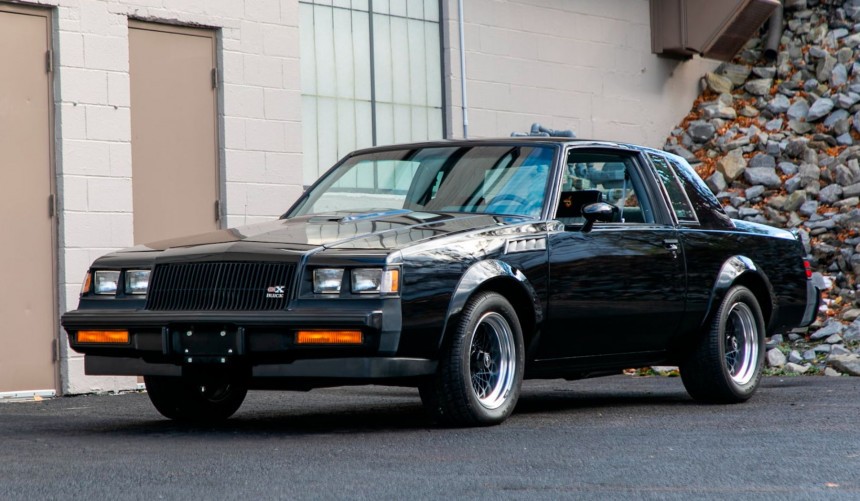For the most part of its history, Buick has focused on building upscale vehicles. Nevertheless, during the 1960s, 1970s, and 1980s, the GM division developed some exquisite performance-focused rides that became muscle car icons.
Founded in 1899 by automotive industry pioneer David Dunbar, Buick has been one of the premium brands of General Motors since the corporation's establishment in 1908.
During its history, America's oldest surviving carmaker has introduced many iconic luxury-oriented production models and concept cars. In fact, Buick became the first company to introduce a concept car in 1938 when it unveiled the Harley J. Earl-designed Y-Job.
However, for muscle car enthusiasts, Buick's finest models came during the three decades when the division dared to mix luxury with tire-shredding performance.
So, in this article, we'll try to forget Buick's current lineup of painfully boring vehicles and remember five of its finest muscle cars.
In 1964, GM siblings Pontiac introduced the high-performance GTO option for its intermediate Le Mans, fueling a muscle car boom among younger buyers.
For the following model year, Buick decided to join the high-performance intermediate craze by introducing the Skylark Gran Sport.
Available in "thin-pillar" coupe, hardtop, or convertible guises, the 1965 Gran Sport didn't feature any aesthetic upgrades to distinguish it from the standard Skylark it was based on (except for unique badges), but mechanical upgrades tucked away under the standard-looking body made it clear the GS was a different breed.
The list of upgrades included a strengthened chassis, heavy-duty shocks, a beefier front anti-roll bar, and larger drum brakes.
In addition, the most noteworthy upgrade was a 400-ci (6.6-liter) "nailhead" V8 that was previously only available in Buick's full-scale models.
Rated at 325 hp and 445 lb-ft (603 Nm) of torque, the powerful V8 made the Gran Sport one of the most capable muscle cars available in 1965.
The 1965 Skylark Gran Sport wasn't a marketing hit like the Pontiac GTO, but it was successful enough to convince Buick to offer it during the following model years.
In 1968, a redesigned Skylark was introduced, and while still based on the intermediate, the Gran Sport became a separate model.
A year later, the GS returned with minimal improvements such as the typical chassis upgrades, twin-snorkel "Cool Air" induction system, and the new 400 big-block introduced in 1967.
However, the big news was the addition of the previously dealership-installed Stage 1 option on the factory order sheet.
Equipped with this option, the Gran Sport's 400 received different, high-performance cylinder heads, a high-lift camshaft, stiffer valve springs, improved pushrods, a higher-flow fuel pump, a larger diameter exhaust system, and a more potent Quadrajet carburetor.
Factory output ratings stood at 350 hp and 440 lb-ft (598 Nm) of torque, but owners soon realized that the Stage 1 400 was actually capable of delivering close to 400 hp.
To this day, the 1969 GS Stage 1 is one of the most underrated muscle cars of the golden age and one of Buick's most revered models.
For the 1970 model year, GM finally lifted its self-imposed 400-ci (6.6-liter) ban on intermediates, enabling its divisions to unleash their most epic muscle cars.
For Biuck, that meant the introduction of the most impressive Gran Sport to date: the GSX.
The new flagship muscle car was available in only two distinct colors, Saturn Yellow and Apollo White, contrasted by black decals, which made it the most unconventional-looking model in the carmaker's lineup.
The aggressive appearance was backed up by an all-new 455-ci (7.4-liter) big-block V8 rated at 350 hp and 510 lb-ft (691 Nm) of twist - the highest torque rating of any American passenger car until the Dodge Viper was introduced three decades later.
The Stage 1 package returned and, like the previous model year, it added different heads and a hotter cam, among other performance-oriented upgrades.
On paper, the Stage 1-quipped GSX gained only ten additional horses, but, again, the figure was grossly underrated to keep insurance premiums at bay. However, when put on the dyno, the engine could easily make 395 hp in bone stock form.
Today, the 1970 GSX Stage 1 is one of the most sought-after muscle cars of the era, and for many, it's Buick's greatest muscle car.
Only three years after the epic GSX debuted, stricter emission regulations, higher insurance rates, and a fuel crisis spelled the end of the muscle car era.
Still, some manufacturers continued to offer performance-oriented models, and Buick was one of them.
The 1973 model year saw a new thorough redesign of the A-body intermediate that was now called Century, not Skylark.
Thankfully, the Gran Sport returned, and it wasn't rebranded. It added a heavy-duty suspension system as well as unique badges and could be had with one of four V8s.
The most potent of those engines was the 455, equipped with the Stage 1 option that made 270 hp (net) and 390 lb-ft (529 Nm).
Though not as mighty as it once was, this version of the 455 made the Century-based GS one of the quickest performance cars of 1973, with only the smaller and lighter Pontiac Trans Am Super Duty outperforming it in a straight line.
In the early 1980s, Buick decided that some performance-induced excitement was needed to reignite public interest in the division's models.
Therefore, they added the performance-oriented Grand National to the Regal range and promoted the model by entering it in NASCAR, where it won two consecutive titles in 1981 and 1982.
In 1987, Buick announced it would bid farewell to the Grand National and all its performance-oriented endeavors but did so in style, introducing the most badass Grand National of them all: the limited-edition GNX.
Conceived in collaboration with McLaren Performance Technologies/ASC, the all-black GNX looked much like a standard Gran National to the untrained eye, with only wider wheel arches, front fender vents, and different wheels hinting that this was a truly unique model.
But the real magic was in the GNX's mechanical upgrades. The limited edition received a completely overhauled suspension system and an extensively-tuned 231-ci (3.8-liter) turbocharged V6.
Capable of delivering 276 hp and a healthy 360 lb-ft (488 Nm) of torque, the bespoke engine enabled the GNX to accelerate from 0 to 60 mph (0-97 kph) in 5.5 seconds and run the quarter-mile in 13.4 seconds at 100 mph (161 kph).
If that doesn't sound impressive, keep in mind that a contemporary Ferrari Testarossa could sprint to 60 mph (97 kph) from a standstill in 5.2 seconds and achieve a 13.5-second quarter mile run - all while lighter and powered by a more capable engine with six additional cylinders.
Though purists cringe when someone calls the turbo V6-powered GNX a muscle car, the snail and lack of two cylinders aren't enough to dismiss this epic machine from the muscle brotherhood.
Buick's most famous performance model, the GNX, is also the most sought-after with values for a low-mileage example often exceeding the $200,000 mark.
During its history, America's oldest surviving carmaker has introduced many iconic luxury-oriented production models and concept cars. In fact, Buick became the first company to introduce a concept car in 1938 when it unveiled the Harley J. Earl-designed Y-Job.
However, for muscle car enthusiasts, Buick's finest models came during the three decades when the division dared to mix luxury with tire-shredding performance.
So, in this article, we'll try to forget Buick's current lineup of painfully boring vehicles and remember five of its finest muscle cars.
1965 Buick Skylark Gran Sport
For the following model year, Buick decided to join the high-performance intermediate craze by introducing the Skylark Gran Sport.
Available in "thin-pillar" coupe, hardtop, or convertible guises, the 1965 Gran Sport didn't feature any aesthetic upgrades to distinguish it from the standard Skylark it was based on (except for unique badges), but mechanical upgrades tucked away under the standard-looking body made it clear the GS was a different breed.
The list of upgrades included a strengthened chassis, heavy-duty shocks, a beefier front anti-roll bar, and larger drum brakes.
In addition, the most noteworthy upgrade was a 400-ci (6.6-liter) "nailhead" V8 that was previously only available in Buick's full-scale models.
Rated at 325 hp and 445 lb-ft (603 Nm) of torque, the powerful V8 made the Gran Sport one of the most capable muscle cars available in 1965.
1969 Buick Gran Sport Stage 1
In 1968, a redesigned Skylark was introduced, and while still based on the intermediate, the Gran Sport became a separate model.
A year later, the GS returned with minimal improvements such as the typical chassis upgrades, twin-snorkel "Cool Air" induction system, and the new 400 big-block introduced in 1967.
However, the big news was the addition of the previously dealership-installed Stage 1 option on the factory order sheet.
Equipped with this option, the Gran Sport's 400 received different, high-performance cylinder heads, a high-lift camshaft, stiffer valve springs, improved pushrods, a higher-flow fuel pump, a larger diameter exhaust system, and a more potent Quadrajet carburetor.
Factory output ratings stood at 350 hp and 440 lb-ft (598 Nm) of torque, but owners soon realized that the Stage 1 400 was actually capable of delivering close to 400 hp.
To this day, the 1969 GS Stage 1 is one of the most underrated muscle cars of the golden age and one of Buick's most revered models.
1970 Buick GSX Stage 1
For Biuck, that meant the introduction of the most impressive Gran Sport to date: the GSX.
The new flagship muscle car was available in only two distinct colors, Saturn Yellow and Apollo White, contrasted by black decals, which made it the most unconventional-looking model in the carmaker's lineup.
The aggressive appearance was backed up by an all-new 455-ci (7.4-liter) big-block V8 rated at 350 hp and 510 lb-ft (691 Nm) of twist - the highest torque rating of any American passenger car until the Dodge Viper was introduced three decades later.
The Stage 1 package returned and, like the previous model year, it added different heads and a hotter cam, among other performance-oriented upgrades.
On paper, the Stage 1-quipped GSX gained only ten additional horses, but, again, the figure was grossly underrated to keep insurance premiums at bay. However, when put on the dyno, the engine could easily make 395 hp in bone stock form.
Today, the 1970 GSX Stage 1 is one of the most sought-after muscle cars of the era, and for many, it's Buick's greatest muscle car.
1973 Buick Gran Sport Stage 1
Still, some manufacturers continued to offer performance-oriented models, and Buick was one of them.
The 1973 model year saw a new thorough redesign of the A-body intermediate that was now called Century, not Skylark.
Thankfully, the Gran Sport returned, and it wasn't rebranded. It added a heavy-duty suspension system as well as unique badges and could be had with one of four V8s.
The most potent of those engines was the 455, equipped with the Stage 1 option that made 270 hp (net) and 390 lb-ft (529 Nm).
Though not as mighty as it once was, this version of the 455 made the Century-based GS one of the quickest performance cars of 1973, with only the smaller and lighter Pontiac Trans Am Super Duty outperforming it in a straight line.
1987 Buick GNX
Therefore, they added the performance-oriented Grand National to the Regal range and promoted the model by entering it in NASCAR, where it won two consecutive titles in 1981 and 1982.
In 1987, Buick announced it would bid farewell to the Grand National and all its performance-oriented endeavors but did so in style, introducing the most badass Grand National of them all: the limited-edition GNX.
Conceived in collaboration with McLaren Performance Technologies/ASC, the all-black GNX looked much like a standard Gran National to the untrained eye, with only wider wheel arches, front fender vents, and different wheels hinting that this was a truly unique model.
But the real magic was in the GNX's mechanical upgrades. The limited edition received a completely overhauled suspension system and an extensively-tuned 231-ci (3.8-liter) turbocharged V6.
Capable of delivering 276 hp and a healthy 360 lb-ft (488 Nm) of torque, the bespoke engine enabled the GNX to accelerate from 0 to 60 mph (0-97 kph) in 5.5 seconds and run the quarter-mile in 13.4 seconds at 100 mph (161 kph).
If that doesn't sound impressive, keep in mind that a contemporary Ferrari Testarossa could sprint to 60 mph (97 kph) from a standstill in 5.2 seconds and achieve a 13.5-second quarter mile run - all while lighter and powered by a more capable engine with six additional cylinders.
Though purists cringe when someone calls the turbo V6-powered GNX a muscle car, the snail and lack of two cylinders aren't enough to dismiss this epic machine from the muscle brotherhood.
Buick's most famous performance model, the GNX, is also the most sought-after with values for a low-mileage example often exceeding the $200,000 mark.
